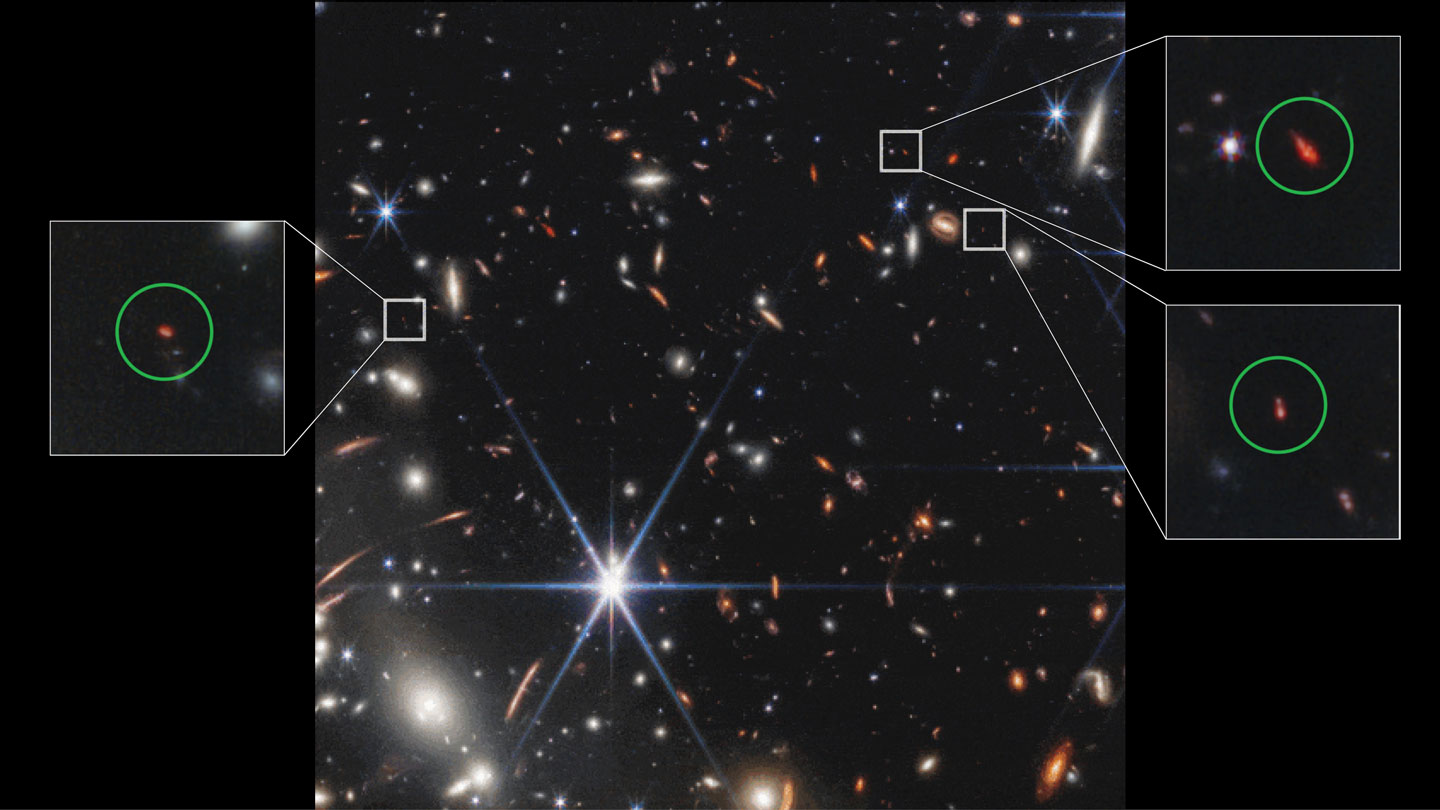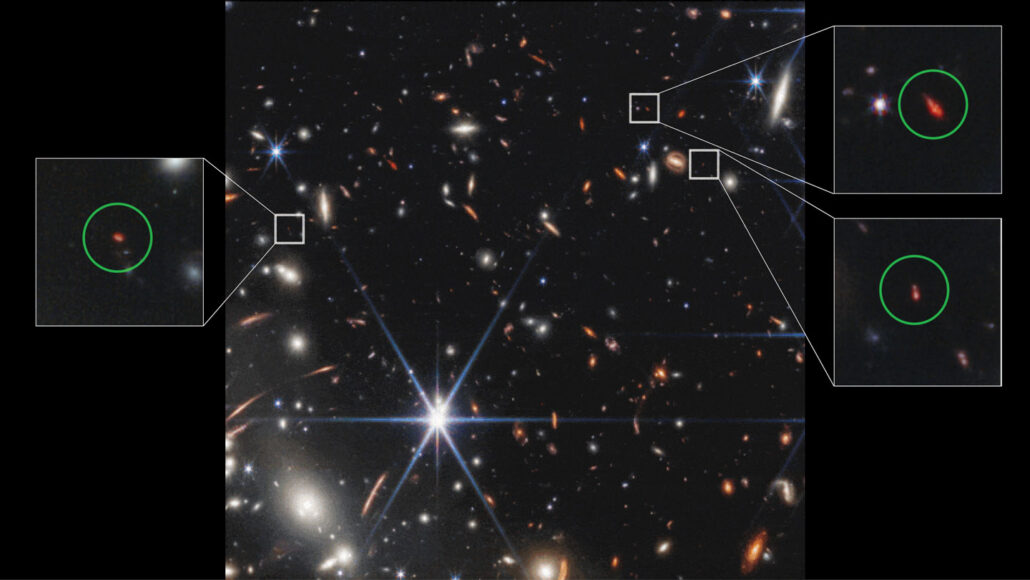- Posts
- 3,671
- Likes
- 118
- Points
- 1,845


The James Webb telescope found ‘Green Pea’ galaxies in the early universe
The James Webb telescope spotted tiny “green” galaxies that might have helped trigger a dramatic cosmic makeover more than 13 billion years ago.
The James Webb telescope found ‘Green Pea’ galaxies in the early universe
The galaxies could have been partly responsible for the ‘reionization’ of the universe

The James Webb Space Telescope’s first image captured three “Green Pea” galaxies in the early universe (circled in green). The galaxies’ light has been stretched by the expansion of the universe, making them appear red.
Galaxies that helped transform the early universe may have been small, round and green.
Astronomers using the James Webb Space Telescope have spotted “Green Pea” galaxies dating to 13.1 billion years ago. These viridescent runts, spotted just 700 million years after the Big Bang, might have helped trigger one of the greatest makeovers in cosmic history, astronomers said at a January 9 news conference in Seattle at the American Astronomical Society’s annual meeting.
Green Peas first showed up in 2009 in images from the Sloan Digital Sky Survey, an ambitious project to map much of the sky. Citizen science volunteers gave the objects their colorful name. Their greenish hue is because most of their light comes from glowing gas clouds, rather than directly from stars.
These galaxies are rare in the present-day universe. Astronomers think that the ones that do exist are analogs of galaxies that were more plentiful in the early universe.
“They’re a bit like living fossils,” said astrophysicist James Rhoads of NASA’s Goddard Space Flight Center in Greenbelt, Md. “Coelacanths, if you will,” referencing a fish thought to be extinct until it showed up off the coast of South Africa in 1938 (SN: 12/2/11).
These galaxies leak much more ultraviolet light, which can rip electrons from atoms, than typical galaxies do. So Green Peas dating to the universe’s first billion years or so could be partly responsible for a dramatic and mysterious cosmic transition called reionization, when most of the hydrogen atoms in the early universe had their electrons torn away (SN: 1/7/20).
Three ancient Green Peas turned up in JWST’s first image, released in July 2022 (SN: 7/21/22). The objects look red in JWST’s infrared vision, but the wavelengths of light they emit are like those of the previously discovered Green Peas. The findings were also published in the Jan. 1 Astrophysical Journal Letters.
“This helps us explain how the universe reionized,” Rhoads said. “I think this is an important piece of the puzzle.”
Thoughts?
